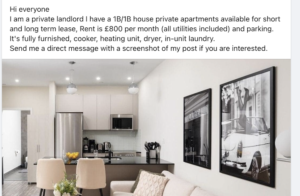So, last week I wrote a post about how to ensure you’re not stomping all over someone else’s copyright when you’re blogging.
What if someone’s treading on your toes?
Having spent hours crafting an amazing set of photos, or blog posts, or a website theme, or whatever it might be – there’s nothing more infuriating than finding some twonk on the Internet has just grabbed the whole thing without so much as a thankyou note.
Take a deep breath. There are things you can do.
First, copy the URL of the offending page or pages. Take a screenshot of your original work, and the copycat. Now you have evidence.
Second, think about who has ripped off your work. It may be that you wrote a review of some shoes and now the shoe company has posted your complete review on their site. Or perhaps you wrote a lovely post about post-natal depression and a women’s charity thinks your article was so great, they want to share it with their readers, too.
In these cases, the chances are that the guilty party isn’t evil, they’re just ignorant of the rules of copyright. These sorts of people often (wrongly) think I’ll be grateful they just stole my content because they’ve “given me exposure”. Pfft.
So, the best approach is to drop them a polite email. Point out that your work is protected under UK and European copyright law and that they do not have the right to publish it. Include the URLs for both pieces of work, as evidence. Request that they remove the content from their website and any other publication they may be using it in, and to confirm to you when they have complied with this request. I often like to include a cheery offer along the lines of: “If you would prefer to license the content for use on your site, my rates are as follows:” (Here insert rates at least 50% above your usual rates, whatever they may be)
Sometimes, your content won’t be on this sort of website though. Nine times out of ten it will be a blog with a random selection of content articles, all of which will have been stolen from different sites by an automated script. These blogs, known as spam blogs or splogs, are a cheap trick used by spammers to fool search engines into thinking this is a genuine site with quality content – which they’ll then flood with visible or invisible links to their dodgy websites, boosting Google rankings in the process.
If you’re dealing with a splog, there is no point in getting in touch and politely asking them to take down your content. No, in this case, you can skip straight to issuing a DMCA (Digital Millennium Copyright Act) notice to the host of the blog – such as Google for Blogger blogs or WordPress. There are loads of templates for DMCA notices, and it's worth checking because different companies require notices to be submitted in slightly different formats, but once you’ve filed a notice with the host, you can expect the page to be removed in around a week.
It’s worth remembering, too, that there are things you can to that will make it harder for people to steal copyrighted material from you:
- Make pictures small: If you’re using family snaps on the site, make them small rather than letting people click on an image to see the full sizes photo.
- Think about alt tags: Alt tags are the names you give to photos when you publish them in a post. If you name a picture “cute sleeping kitten” (as I once did) then it turns out that 20 people a day Googling that term will land on your photo, and presumably steal it. Given the fact that I paid for the privilege of using that photo, it narked me no end that someone else was just stealing it for free. If you don’t care about SEO, use alt tags like numbers or first names. If you do care about SEO, use tags relating to your post topic, and not the image.
- Consider watermarks: sometimes you’ll be using images that need to be large, perhaps because your blog posts are very visual. In this case, you can easily add watermarks to photos – use them in the middle so someone can’t crop them out. If you think this would detract too much from the image, then use a digital watermark – this is an invisible bit of code embedded into images that prevents them being copied and reused.
- Clip your RSS: If you’re finding copyright theft a problem, amend your RSS feed so you’re not publishing a feed of your full content. Instead, publish extracts of each post – perhaps 50 words or so. You can do this in your blog's RSS settings. This will annoy all HECK out of subscribers, though, so only do it if you’re genuinely concerned.
- Make it Obvious: Legally, you don’t have to put a copyright symbol on your site to be protected by copyright, but having it there might make someone think twice about stealing it.
Any other tips?




